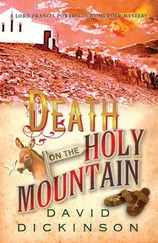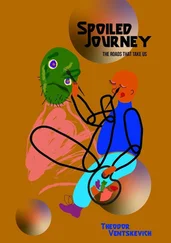1 ...7 8 9 11 12 13 ...30 There was another attraction which should have recommended Constantinople to Moschos: its extraordinary number of sacred relics. Moschos comments on the existence of such relics in almost every place he writes about; only in Constantinople does he omit to mention the number of holy objects on show in the churches, even though the capital’s collection was the finest in Christendom. In one shrine alone, that under the Porphyry Column in the Forum of Constantine, were secreted the holy nails used in the crucifixion, the axe with which Noah built the Ark, and the Dodekathronon , the twelve baskets in which had been collected the leftover loaves and fishes from the feeding of the five thousand, which had been miraculously rediscovered by the dowager Empress Helena near the Sea of Galilee. Elsewhere in the city could be found the Crown of Thorns, the head of John the Baptist (‘complete with hair and beard’, according to one source,) the bodies of most of the innocents murdered by King Herod, and great chunks of the True Cross.
However dubious their pedigrees may seem to our eyes, to the Byzantines relics were objects of priceless value. To see or to touch them was to come into direct contact with a God who was otherwise almost unimaginably distant and inaccessible. Relics were holes in the curtain wall separating the human from the divine. By contemplating them, and by reaching out and touching them, the Byzantines felt they were reaching through the great barrier which separated the visible from the invisible, the mundane from the transcendent. Gregory of Nyssa, a century before Moschos, described the emotion felt by ordinary Byzantines when they touched a sacred relic: ‘Those who behold them embrace them as the living body [of the saint] itself; they bring all their senses into play and shedding tears of passion address to the martyr their prayers of intercession as if he were alive and present.’
Moschos must have had good reason to dislike a city full of such precious and holy objects, and a quick reading of the sources gives a good idea of what it was. For it seems that even by metropolitan Byzantine standards, Constantinople was a deeply degenerate place. When Justinian legislated on the Empire’s brothels, the law he published contained a preamble which gives some details about the state of the capital’s morality. Agents, it seemed, toured the provinces luring girls – some of them younger than ten years old – into their clutches by offering them fine clothes and shoes; once in the capital they were made to sign contracts and provide guarantees for their attendance at their bordello. Otherwise the unfortunate girls were kept imprisoned inside the whorehouses, shackled to their beds.
Nor was Constantinople’s aristocratic elite renowned for its marital fidelity. Asterius of Amasia scolded his congregation: ‘You change your wives like your clothes, and build new bride-chambers as casually as stalls at a fair.’ St John Chrysostom blamed the city’s famously lascivious theatre: ‘When you seat yourself in a theatre and feast your eyes on the naked limbs of women, you are pleased for a time, but then, what a violent fever you have generated! Once your head is filled with such sights and the songs that go with them, you think about them even in your dreams. You would not choose to see a naked woman in the marketplace, yet you eagerly attend the theatre. What difference does it make if the stripper is a whore? It would be better to smear our faces with mud than to behold such spectacles.’
St John Damascene was even more shocked by what he heard of the ‘city filled with impiety’. Constantinople was the setting of dances and jests, he wrote disapprovingly, as well as of taverns, baths and brothels. Women went about with uncovered heads and moved their limbs in a provocative and deliberately sensuous way. Young men grew effeminate and let their hair grow long. Indeed, complained the monk, some went so far as to decorate their boots. In such a climate even the bishops grew foppish. The Ecclesiastical History of Socrates talks of Bishop Sisinnios, who ‘was accustomed to indulge himself by wearing smart new garments, and by bathing twice a day in the public baths. When someone asked him why he, a bishop, bathed himself twice a day, he replied: “Because you do not give me time for a third.” ‘
The chief witness for the prosecution must, however, be Procopius, Justinian’s official court historian. For most of his adult life, Procopius faithfully produced volume after volume of oily sycophancy, praising Justinian for his skill as a general, his taste as a builder and his wisdom as a ruler. Then quite suddenly, towards the end of his life, it seems he could stand it no more. He cracked, and the result was The Secret History , a short volume of the purest vitriol, in which the old historian sought to correct the honeyed lies he had been writing for thirty years. Justinian’s reign, he wrote, had been an unmitigated disaster, leading to fiascos on many fronts, but above all to a situation of unparalleled moral anarchy. And he knew who to blame: Justinian’s wife, the scheming Empress Theodora. Brought up in a circus family,
as soon as she was old enough she joined the women on the stage and promptly became a courtesan. For she was not a flautist or a harpist; she was not even qualified to join the corps of dancers; but she merely sold her attractions to anyone who came along, putting her whole body at his disposal …
There was not a particle of modesty in the little hussy: she complied with the most outrageous demands without the slightest hesitation. She would throw off her clothes and exhibit naked to all and sundry those regions, both in front and behind, which the rules of decency require to be kept veiled and hidden from masculine eyes … In the theatre, in full view of all the people, she would spread herself out and lie face upwards on the floor. Servants on whom this task had been imposed would sprinkle barley grains over her private parts, and geese trained for the purpose used to pick them off one by one with their bills and swallow them.
She used to tease her lovers by keeping them waiting, and by constantly playing about with novel methods of intercourse, she could always bring the lascivious to her feet; so far from waiting to be invited by anyone she encountered, by cracking dirty jokes and wiggling her hips suggestively she would invite all who came her way, especially if they were still in their teens. Never was anyone so completely given over to unlimited self-indulgence. Often she would go to a dinner party with ten young men or more, all at the peak of their physical prowess and with fornication as their chief object in life, and would lie with all her fellow diners in turn the whole night long: when she had reduced them all to a state of physical exhaustion she would go to their menials, as many as thirty on occasion, and copulate with every one of them; but not even so could she satisfy her lust.
And so it goes on, for (in the Penguin edition) 194 pages. It seems likely that Procopius had some personal grudge against the Empress, who may have been responsible for blocking his promotion or somehow harming his career. Even so, it is a remarkable testimony. At the end of the book, Procopius tells of Theodora’s attempts in her old age to control prostitution. Overcome with guilt for her former sins, she closed the brothels, bought up all the prostitutes, and put them in a former Imperial palace which she converted into a Convent of Repentance.
But, notes Procopius, this was one of Theodora’s less popular enterprises. According to him, the girls found this new way of life so dull that most ‘flung themselves down from the parapet during the night’ rather than be turned into nuns.
In the cool of the evening I walked over to the Hippodrome. In what was once the stalls, where the violent Byzantine circus factions once knifed it out, large Turkish ladies in headscarves now sit quietly gossiping on park benches. Their husbands squat nearby, under the chestnuts, cracking pistachio nuts. The occasional salesman with a glass cupboard on wheels wanders past, hawking paper cones full of chickpeas. Gulls hover silently overhead. It is strange to think that the hippodrome once held 120,000 people – double the present-day capacity of Wembley Stadium.
Читать дальше












